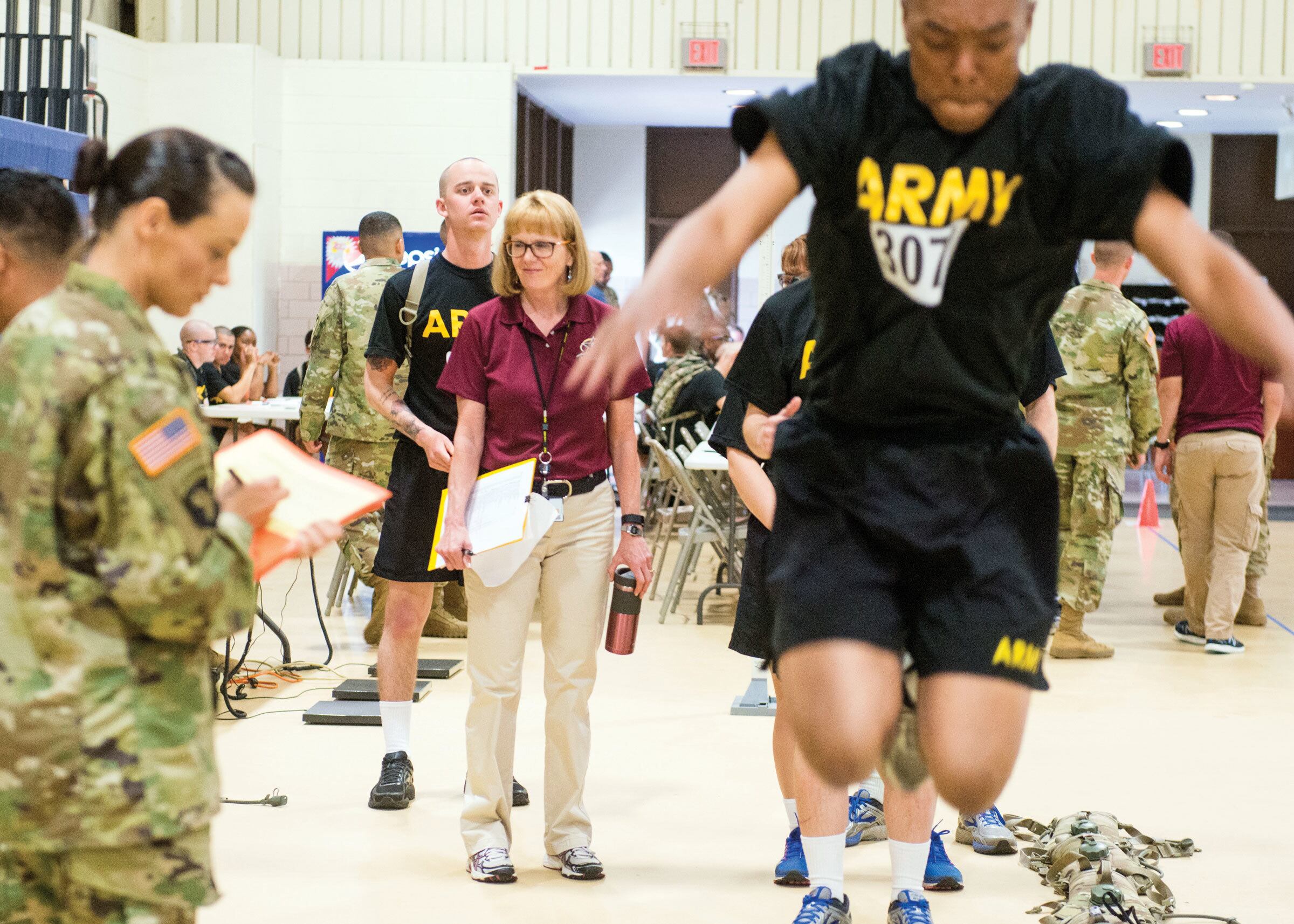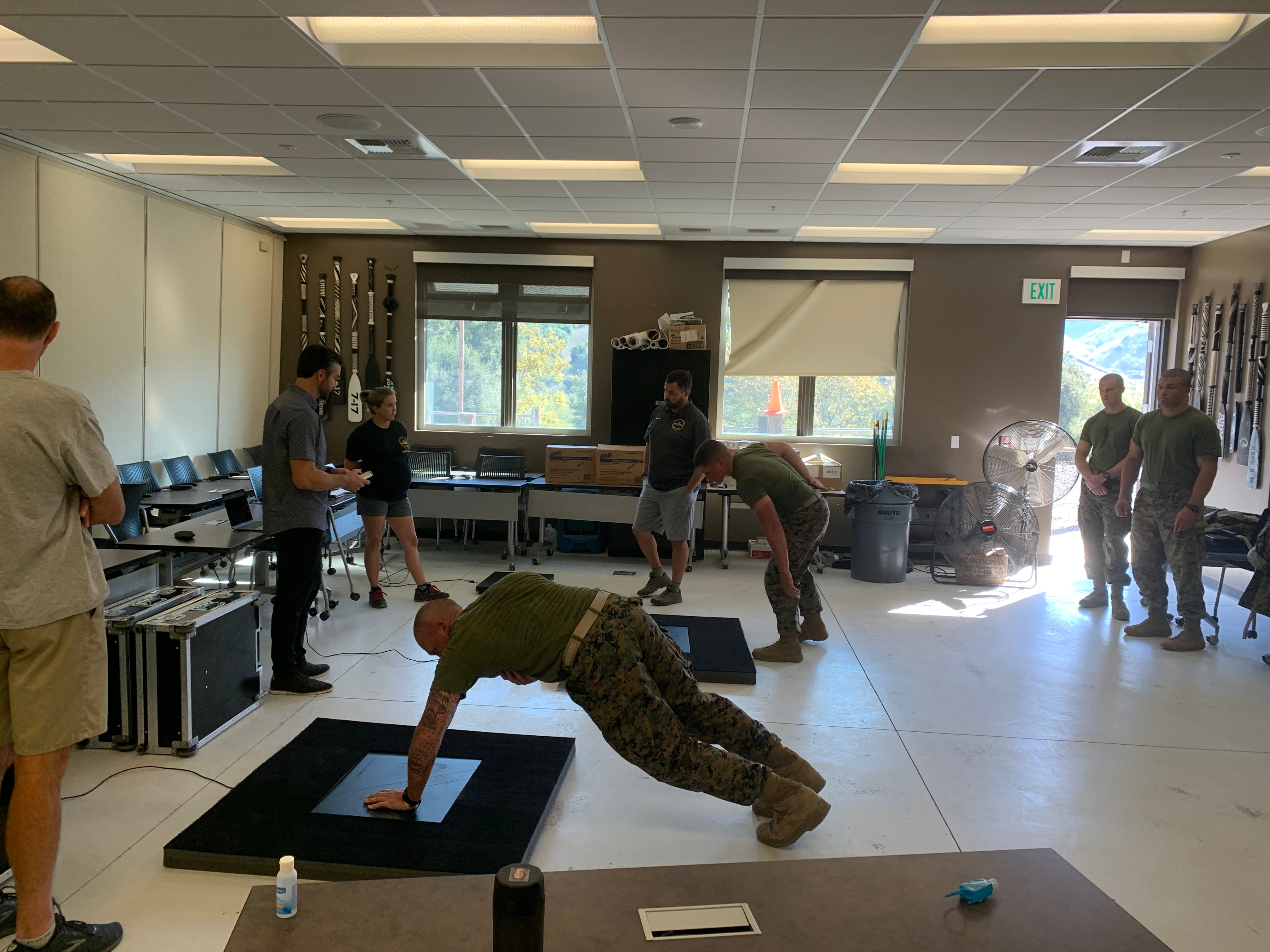For the past year, Marines have been using “force plate” technology and data analysis to assess core and lower extremity strength, all in an effort to correct imbalances, improve performances and prevent injuries.
The Army is following closely, having recently adopted the same technology. And in its latest budget documents, Congress is asking for a report by September 2021 from the services on which units are using these methods and how effective they are in preventing injuries.
And there’s good reason to track the information.
A study in the most recent volume of Military Medicine found that more than half of all active duty soldiers sustained at least one injury in 2017, and overuse injuries made up as much as 70 percent of all soldier injuries.
RELATED

And a deeper dive in the data showed that female soldiers had lower aerobic and muscular fitness performance that correlated with higher injury rates. Not surprisingly, older soldiers had a greater injury risk than younger soldiers.
The Marines started using “force plate machine learning” designed by the private company Sparta Science late in 2019 at entry level training such as recruit training and Officer Candidate School and The Basic School, Capt. Sam Stephenson, a Marine spokesman with Training and Education Command, told Marine Corps Times.
That has also been adopted at the Infantry Officer Course, both School of Infantry East and West, the southern U.S. 6th recruiting district and West Coast 12th recruiting district and Drill Instructor School.
The devices require users to perform planks, jumps and other movements and then, based on a more than 2 million sample database, it measures core and lower extremity strength, which when weak or imbalances are often predictors of potential injuries.
Stephenson explained that entry-level Marine recruits, candidates and students at these locations are tested either before the training begins or when it starts.
Based on their performance, users are then provided corrective exercises and programs to mitigate injury risk during their training.
At OCS, students are reassessed at graduation to track the effects of training on injury risk, he said.
The Army’s Mission and Installation Contracting Command is using Sparta Science’s “movement diagnostic” technology for the same kinds of assessments and programs for soldiers.
The company’s devices are also being used in special operations, Air Force and Navy units, according to its website.
Current Congressional budget documents are encouraging each of the services to “develop a tool to validate the physical fitness of warfighters and to aid in the determination of combat readiness.”
Both the Senate and House Armed Services Committees have requested the services provide a report by September 2021 that includes a list of the units using force plate technology and machine learning, its impact on readiness, analysis on how it could be used to create a more “deployable, resilient and sustainable combat force.”
The report must also determine attrition and injury reduction achieved by using the technology, which component within the services would be responsibly for implementing customized training programs recommended through using the tool.
It also needs to include the feasibility of those programs, the cost of implementing such programs versus lost time to injury and attrition and savings from injury avoidance.
Todd South has written about crime, courts, government and the military for multiple publications since 2004 and was named a 2014 Pulitzer finalist for a co-written project on witness intimidation. Todd is a Marine veteran of the Iraq War.




